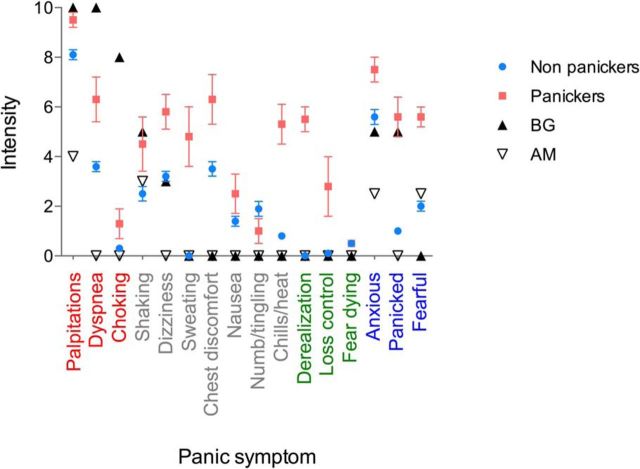Figure 2.
Panic anxiety during bolus isoproterenol infusion. Participants received a 4 μg bolus of isoproterenol administered in a single-blinded manner and retrospectively rated symptoms on a panic attack checklist. They were dichotomized as panickers or non-panickers according to whether they met standard criteria for a panic attack. Under these criteria, 4 of 15 comparison subjects panicked (26.7%). One twin with bilateral amygdala lesions panicked (B.G.), whereas the other did not (A.M.). Both twins endorsed increased anxiety, as well as palpitations and shaking during the isoproterenol infusion. One twin (B.G.) reported prominent respiratory symptoms of dyspnea and choking sensations, whereas the other reported none whatsoever (A.M.). In contrast, all of the healthy comparisons reported increased dyspnea (i.e., rated a ≥ 1 of 10) at this dose. Symptoms are grouped into different colors according to category: cardiorespiratory (red), somatic (gray), cognitive (green), and emotional (blue). Error bars indicate SEM.

